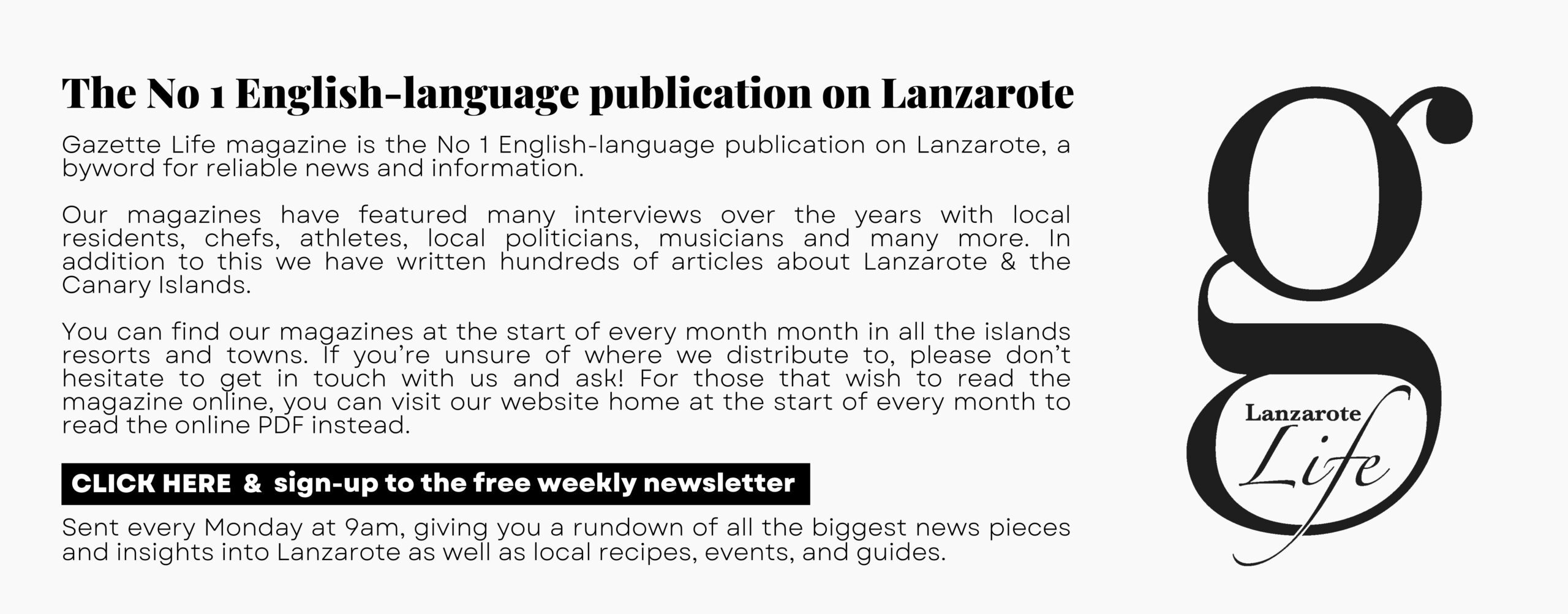Tour guide David Penney takes us past calm lagoons, a fishing harbour, and wild, wave-battered shores to the impressive Montaña Bermeja.
We park our cars opposite the main reception of Club La Santa and start walking south-west. Very quickly we arrive at the lovely wee beach of Playa Boca de Abajo, which is a black sand volcanic strand rarely visited by tourists. As we take a pleasant stroll along the beach I notice that we are alone: just me, five girls and Peanut the dog, and we can just hear the sound of the waves as Club La Santa still remains closed.
We walk anti-clockwise around the lagoon, where you often see people kayaking, paddle boarding and wind surfing. It is a tidal lagoon but protected from the waves and is a hidden gem in the north, I understand that the lagoon is leased by Club La Santa, but use is not restricted.
Opposite the lagoon is a marshy type area which is home to various types of waders and an African heron, so it regularly attracts birdwatchers and photographers.
We cut across the outskirts of the marshy banks heading towards the village of La Santa, passing the famous surf bay for experienced surfers who regularly frequent the area, especially during the winter swells. The tide had been going out for a couple of hours but there were still dozens of surfers in the water and many cars were parked up watching them.
As we arrive at the village, we witness the skills of a fishing boat negotiating the hazardous entrance into the harbour. The skipper made it look easy but, believe me, he had to take into consideration many factors such as wind and the entrance is peppered with rocks and buffeted by strong waves.
We cut through the village, keeping the houses on our left and the ocean on our right, until we come to a blue sign which says Camino El Picacho. This path takes us along a track towards the little hamlet of Las Betancoras, which consists mainly of two streets with rows of detached houses on each side. We pass over the land and can just see the remains of the old water-pumping station which used to dominate the coastal area until it was completely flattened, and the debris removed many years ago. I have been here many times over the past exploring the various buildings and even arranged a couple of photo shoots here.
From the end of the village the tarred road stops, and it becomes a dirt track all the way with a slight incline in one place.
We now follow the rugged coastline for a few kilometres to the base of the extinct volcano. Rather than turn off and climb into the crater I decided to take the group round the base, then up to the south side where we get a spectacular view of the red and black ash and cinders that poured out from the previous eruptions.
We choose this point to relax for some juice and snacks and enjoy the view as we look down the coastline towards Tenesar. I have fond memories of sitting on the top ridge one evening watching a magnificent sunset over the ocean.
The path up is fairly hazardous as it is quite steep with a lot of loose scree and can be dodgy coming back down, so good footwear is essential if you are going to attempt it.
There is a path which takes you down to the ocean which looks inviting, but don’t underestimate the danger of the waves and slippery rocks. A few years ago a Polish couple came trekking here and he sadly lost his life in the ocean while posing for a photo.
After our break we turn back, and our pace quickens on the return leg, and I suggest we continue along the road through the villages as this is a variant to the route and quicker. Very soon we arrive at the Emerlan station at the edge of the lagoon and we decide to continue along the paved path all the way back to our cars.
There is a great wee bakery in the village of La Santa called Los Dolores which is ideal for a coffee, cake, or a cold drink.
WALK INFORMATION
This is a linear 13km walk that should take you approximately 3 hours to complete. The terraine is flat and non-challenging.
You can get the number 16 bus to get to Club La Santa if you don’t want to use your car.
For regular updates, pictures and videos of Lanzarote be sure to like and follow our Facebook page “Gazette Life Lanzarote”.











